Caress and Torment The Soul
By: Ondřej Pokorný
Photo: Lasvit, Museum Kampa
His work is an adventure. Looking at the huge canvases, you don’t know which way is up or down. You take one of his glass vases in your hand and feel anxiety, melancholy, as well as desire. And should you get to watch Vladimír Kopecký work, your jaw would drop seeing the wild gestures transitioning to silence, his infamous ever-present mess, as well as his vitality. Not only that, you would surely be soaked with paint from head to toe. Likely yellow. Because that’s his favorite.

Glass deserves much more than schematic decorativeness. Each of the vases from the Dance of Turtles Collection is different. But they all caress and torment.
TO CARRESS AS WELL AS TORMENT THE SOUL
A storm, as well as an absolute peace. In his work, Vladimír Kopecký invokes both extremes. “I admire painters such as Mondrian and Rothko, who were able to maintain a single line of work their whole lives. I wouldn’t be able to handle that. When I feel that I’m beginning to repeat myself, I prefer to look for a new path.” Thus the Czech artist describes his internal tension.

Kopecký loves yellow. He claims his orders of yellow form a great proportion of the producers' turnover
We’re looking at a hundred of his large-scale canvases from the last two years in his Prague atelier. “They say I shouldn’t work so much anymore but it seems to me that I’ve never been busier,” says Kopecký with a smile. He recently celebrated his ninetieth birthday. The canvases feature combinations of geometric shapes with splashes of blue, green and, in particular, yellow. The rationally built motifs versus radical gestures. He prefers to create in motion, laying the canvas on the floor or a glass object on a table, circling around it with a can of paint and dramatically spilling it all around. If he picks up a brush at all, it’s only for a few strokes. Then he thoughtlessly tosses it out – or makes it directly a part of the painting. “A practical task such as cleaning the paint brush would only unnecessarily disturb my concentration,” the artist explains.
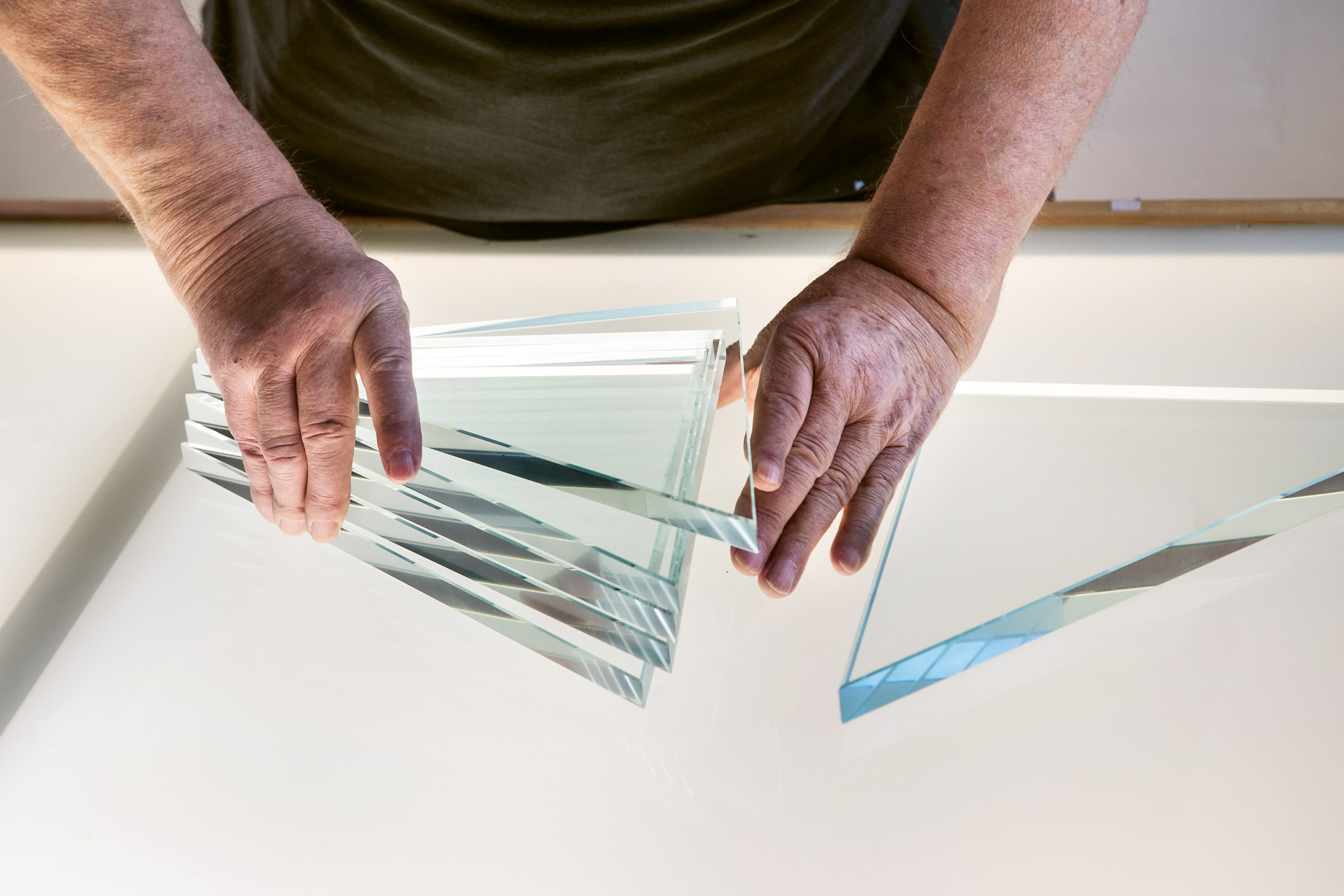
Geometry, sharp edges, visual illusions. One of the approaches to Kopecký’s glass creations.
His style of work in many ways resembles the action expressionism of Jackson Pollock, Franz Kline or Willem de Kooning. Yet he immediately adds an essential explanation of his approach to art: “Whenever I get tired of expressiveness, I gladly come back to more sober motifs. I let off steam, calm down. It’s important for me to move on. If an artist is afraid to take risks and worries what the arbiters of good taste will say about their work, it’s a waste of time. I want to come up with something original, so that my work awakens emotions and fantasy in people. So that it both caresses and torments.”
“From the depths, to the heights, below the width, I cut my misery, Into the flesh, Of decaying reality, And infuse with it, Thorough smoke”
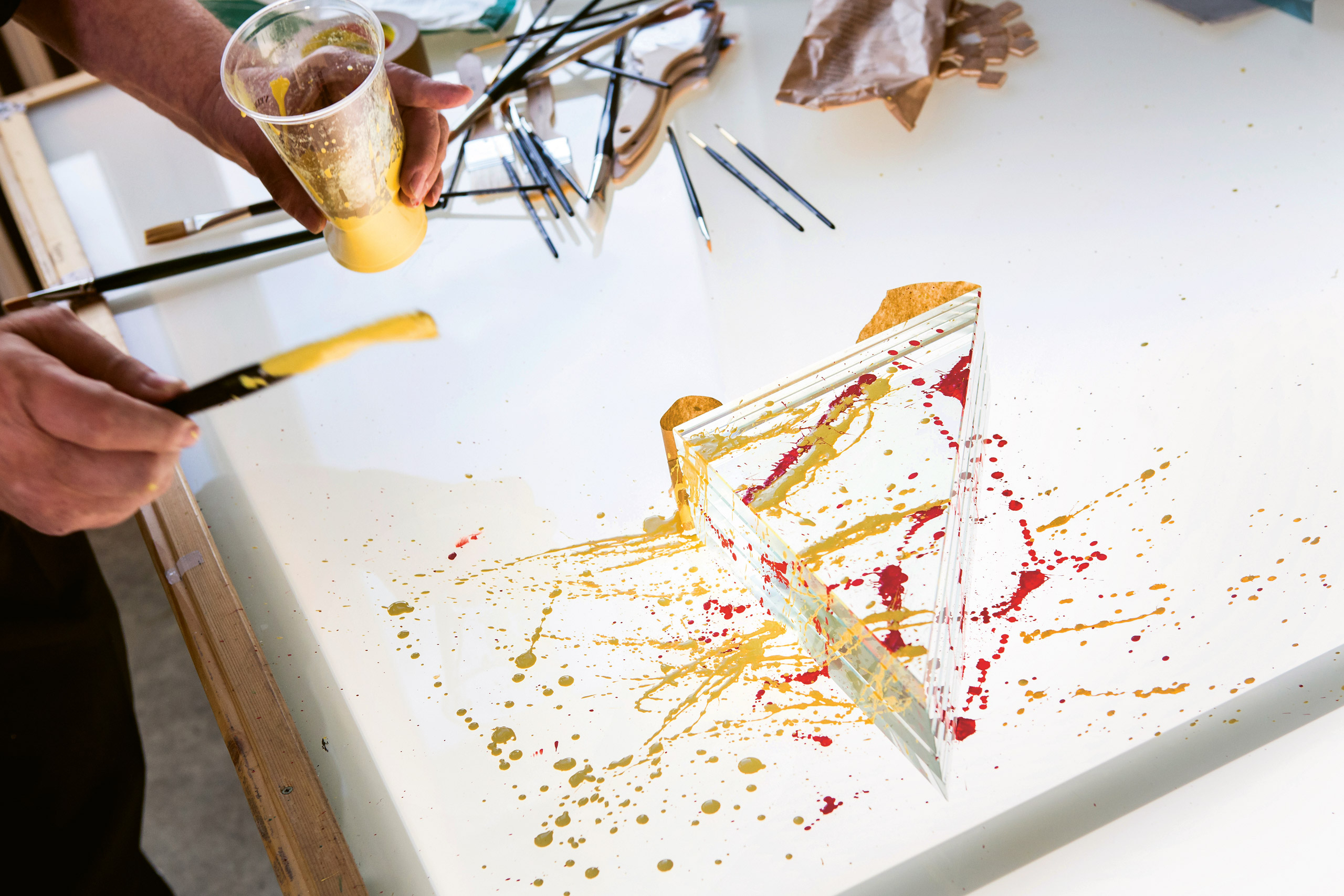
“And when I get tired of the order, I hit it with a layer of paint,” the legend of Czech glass art explains.
AN ICON OF CZECH GLASS and PAINTING
The emphasis on caressing and tormenting the soul is true for both Kopecký the painter, and Kopecký the glassmaker. “These are communicating vessels. The approach is the same, but the glass objects enable the projection of emotions, colors, geometry, as well as chaos, into spaces while adding the effect of light and shadows.” Kopecký’s career covers over seventy years now. Aside from glass and painting, it includes mosaics and, in recent years, also the poetry he writes at night.
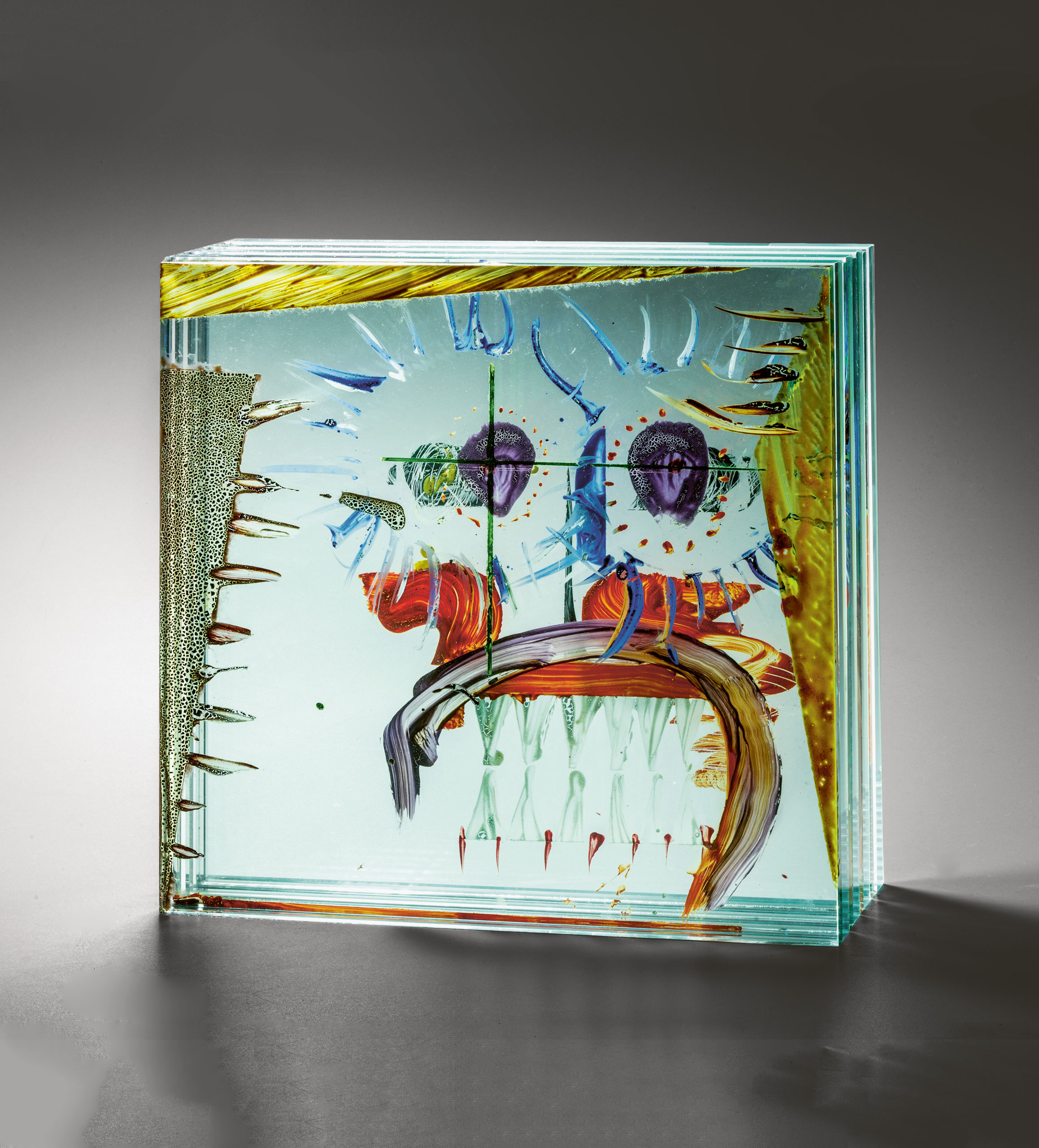
One sheet of glass features only a slight touch of a brush, another sheet is completely painted over, the third is nearly untouched, and the beauty of the lines on the fourth only becomes apparent once the Monsters object is fused in a glassmaking kiln.
He began making glass in the 1940 s at schools in North Bohemia. Then he moved to Prague, continuing his studies at Academy of Arts, Architecture and Design. His work was heavily influenced by meeting renowned glassmakers and artists such as René Roubíček and Stanislav Libenský, as well as his long-term teacher, Josef Kaplický. “It was only at the Academy that I began consciously doing abstract art. Under Kaplický’s guidance, I had the opportunity to contribute to a monumental glass installation for the Milano Triennale 1957. At that time, the abstract approach was directly in the assignment. I never stopped being fascinated by large canvases or objects,” he adds.
In terms of influences on his work, we shouldn’t omit two aspects of his personal life. The first is that he has a twin and perhaps this may explain his drive to be different from others. The second is that he suffered a serious injury as a twenty-year-old glass cutter. “During the school practice, the cutting ring shattered and broke bones in my face. They say that five people out of a hundred would survive such an accident. My face was deformed and I thought that was the end. But at least I had a story to tell the girls.” Perhaps it’s a shortcut but one cannot but notice that his glassmaking work shows parallels with the experience of having his face deformed.
“Thi nights are sobe, nearing the gray morning, too eager, in the midnight flood of, millions of stars, I have a story to tell, abour a key, about painting music, silence, why exactly about a key?”
TRULY UGLY GLASS? NO WAY!
A year after the Milan show, he achieved great success at the World Expo in Brussels. Along with Adriena Šimotová and František Burant, they received a gold medal and contributed to the renown of the legendary Czechoslovak pavilion. The year was 1958, Kopecký was a mere 26 years old and sensing that the time to distance himself from the decorative esthetic had arrived. “I began despising the traditional esthetic,” he recalls, “I realized that glass cannot be glorified, that it’s mainly the means to achieving a goal, not a decoration. This is why it can be handled in contradiction to conventions, thus also in an ugly manner.”
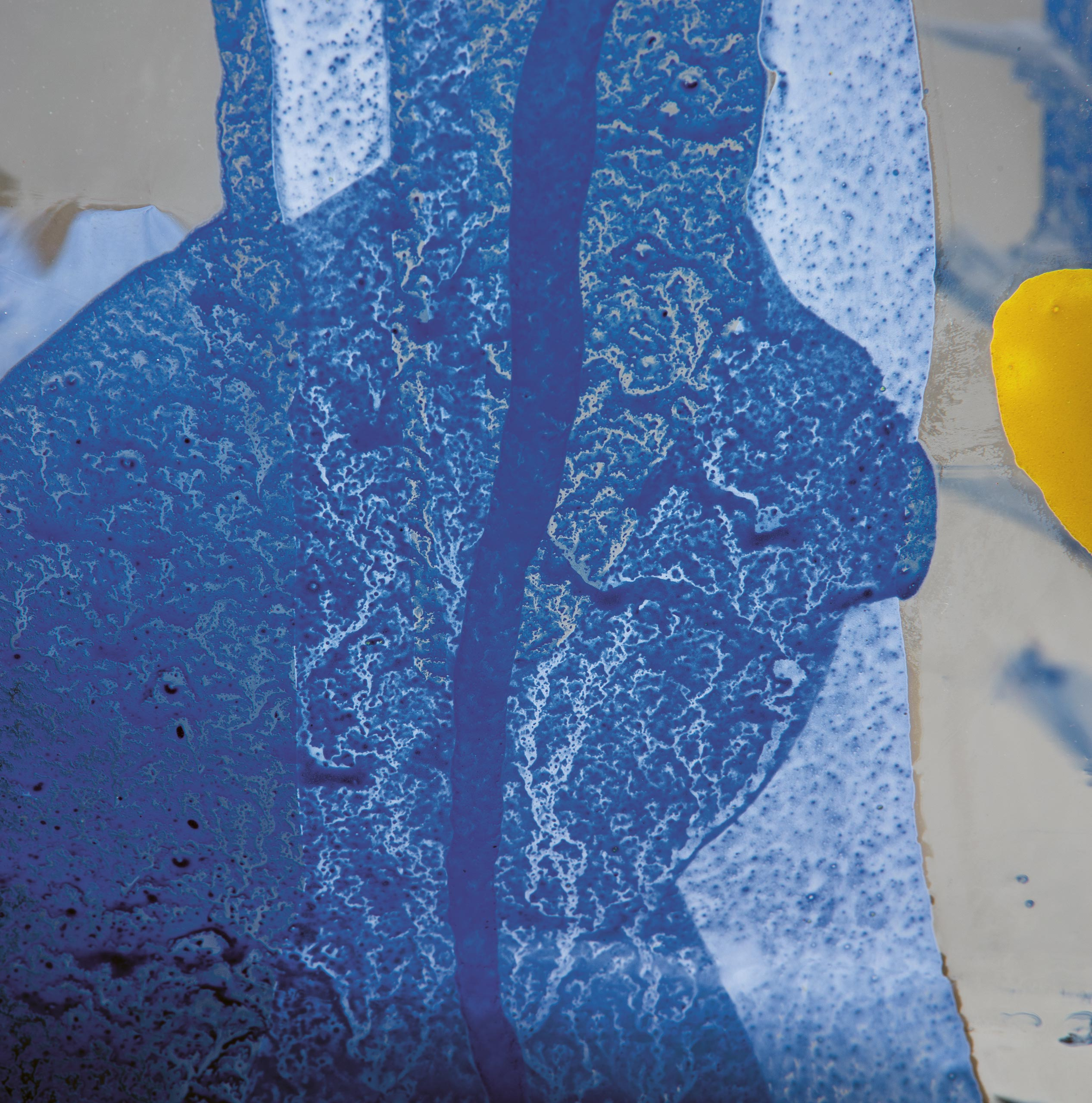
There is no precise plan. Only experience and the courage to move on. According to Kopecký, this is true both while creating vases in a glass workshop and in life in general.
Upon closer examination of his glassmaking output, it’s apparent that the word ‘ugly’ is meant more in the sense of ‘non-traditional’ or ‘unusual.’ His glass objects are everything but ugly. This is evident from the interest of private collectors, as well as the placing of his works in over thirty significant collections of modern art and glass worldwide (including Corning, Toyama, as well as the National Gallery in Prague).
His exceptional approach to glass is apparent from earlier works from the 1960s, 1970s and 1980s, notable for their geometric forms and optical illusions, as well as from glass objects of recent years, where the artist for the first time combined geometry with expressiveness and colors. This is particularly true in case of the Dance of Turtles vase collection and the Monsters series of glass objects that he designed and personally painted for Lasvit.
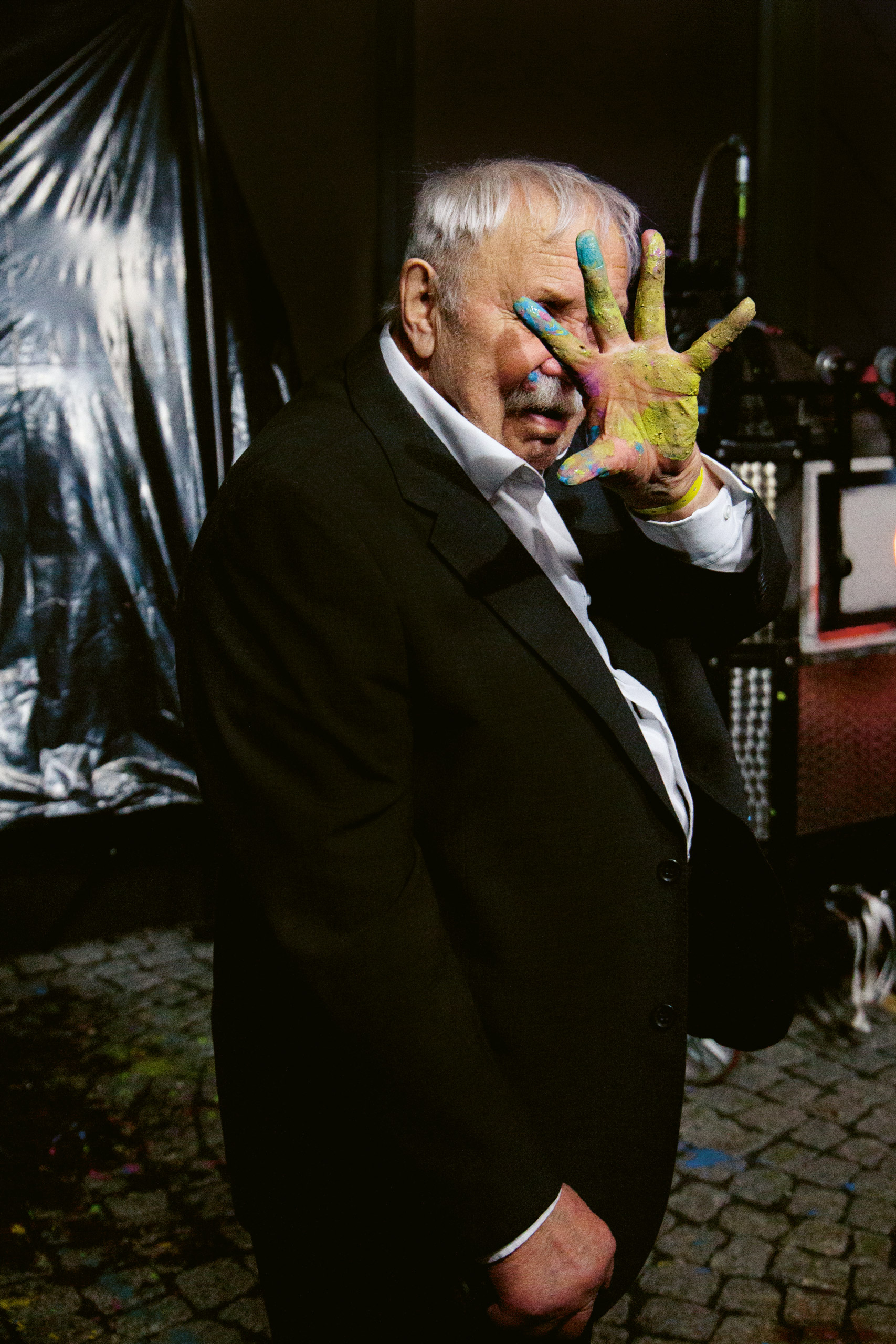
Ninety is only a number. Given his age, he supposedly shouldn’t work as hard, but Kopecký enjoys every day at the glassworks or in the atelier.
How does Kopecký create such masterpieces? At first glance, he simply pours colors over a glass object equally instinctively as when he paints on canvas. Yet, this seemingly trivial act requires a deep understanding of technologies, glass, colors, as well as great courage and determination to push the boundaries of abstract and specific expression. In his works, these two poles blend, come further apart and closer, until they finally become one.
“What did glass whispered to me? It is finished. At the dismantled street, recoiling house numbers burn, at the rubble dump, halved carnation, invites green grace, among its petals”
In glass solitaires named Caravans of Monsters March Through the Silent Marsh he combines layers of strictly geometric sheets of glass with broad color gestures. Some layers are painted over nearly entirely, others contain just a stain of color. “When you do all this for seventy years, the color almost pours itself on the vase,” the artist explains, laughing. “I don’t have a specific plan during the work, I’m only making sure I don’t repeat myself.” As soon as he senses that his work shows too many similarities, he immediately leaves the shape or combination of colors and comes up with new ones. Therefore, each piece is a true original, breathtaking, caressing, tormenting. Exactly as the artist intended.
Professor Kopecký is among the legends of Czech glass. As a painter, a graphic designer and a glass artist, he’s completed hundreds of works – objects, performance or installations within architecture. Despite his ripe age of 90 years, he is still very active. Between 1990 and 2018, he headed the Glass Atelier at the Academy of Arts, Architecture and Design in Prague and raised a number of artists. His work is characterized by the dichotomy of unbounded expressiveness and the desire for a geometric order, constantly oscillating between these two approaches. Among his most significant successes are the Gold Medal at Expo 58 in Brussels, a presentation at Glass 84 in Japan, where he received The Bridgestone Museum Prize, as well as Holst Glas Prijs from the Groeneveld Gallery and the Ministry of Culture Award from 2009, for contribution in the area of visual arts. He lives and works in Prague and Nový Bor, North Bohemia.


